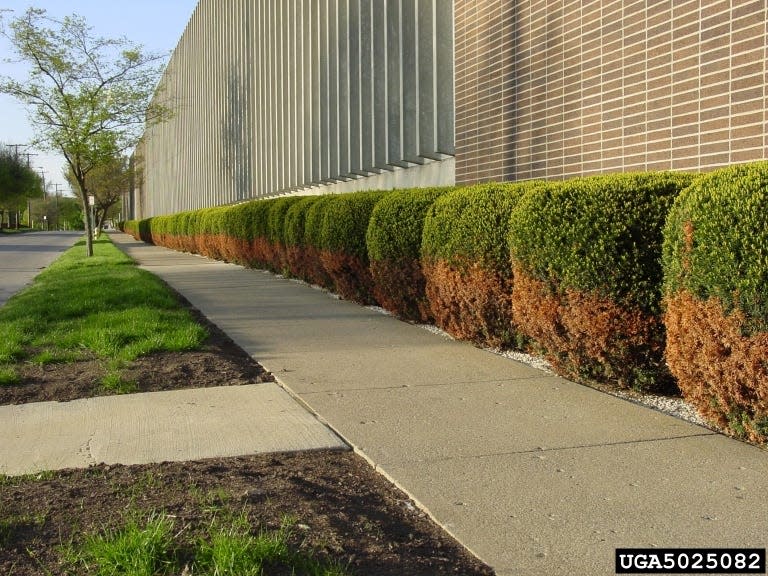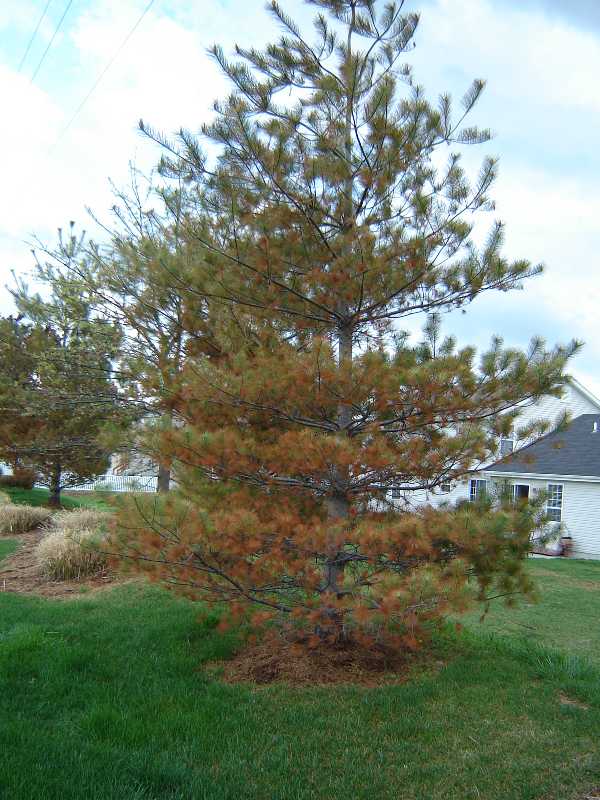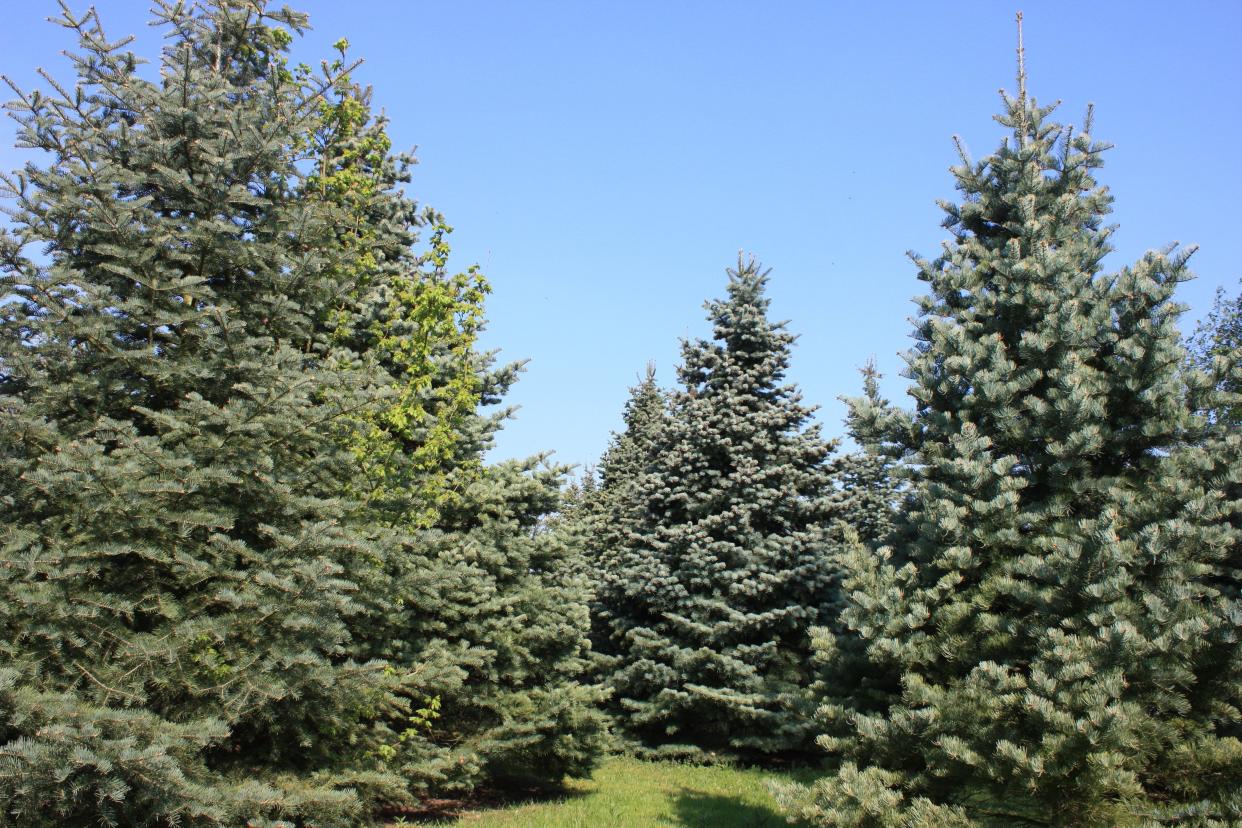Garden: Putting salt down on sidewalks and driveways? Consider impact on plants

Winter weather arrived in Greater Columbus this past week, and with colder temperatures, ice and snow, comes the need to control ice buildup on driveways, sidewalks and other outdoor surfaces. Before heading out to purchase salt and other de-icing materials, consider how these materials can damage plants in close proximity to locations where you plan to apply de-icing materials. Although salt and de-icers are sometimes necessary for safety in winter, they can have toxic effects on both plants and waterways.
Salt damage to plants
The most popular de-icer is rock salt, or sodium chloride, which is the same as table salt. It is popular as a because it works well at freezing temperatures, is inexpensive and is widely available. The problem is that sodium chloride is very corrosive and easily damages plants that retain their foliage year-round, such as boxwood, hemlock, yews and other evergreens. Buds of deciduous trees can also be damaged by salt.

There are two types of damage from de-icers that are typically applied to roads and walkways: salt spray and soil-borne salt. Salt spray can travel up to 1,000 feet from salt-treated streets and roadways by fast-moving traffic and winter winds. Salt in this spray pulls water out of the foliage of plants and also from the buds of deciduous trees. Salt spray is especially damaging in the late winter and early spring when leaf buds are beginning to swell. Often the leaves and flowers on the side of the tree or shrub facing the road do not open or are stunted because of the salt spray.
More: Garden: Planting seeds in winter? Sure, several crops can be winter sown
Soil-borne salt damage occurs when the de-icer from a road or walkway accumulates in the soil from salt-laden runoff as snow and ice melt. The amount of salt that accumulates is affected by the type of soil and its drainage. Soils that are higher in clay can hold more salt than sandy soils. Unlike a salt spray, soil-borne salt injury develops slowly over time and causes many complications for plants.
Salts absorb and bind tightly with water, preventing roots from absorbing water. The salt can even pull water from the roots of plants, creating a drought-like condition. At higher concentrations, sodium will compromise the absorption of essential nutrients such as calcium, magnesium and potassium from the soil. Plants damaged by salt become more susceptible to insects and diseases. Diagnosing soil-borne salt damage can be difficult because symptoms are similar to those caused by insects and disease.

Effects of salt on water quality
Surface water can also be negatively affected by the application of de-icers. A teaspoon of salt contains enough chloride to pollute five gallons of water. When temperatures warm and ice and snow melt, salt and de-icers eventually flow into streams, ponds and lakes through runoff, storm drains and drainage ditches. This causes waterways to become more saline over time, which negatively affects aquatic species that are sensitive to salt.
Minimizing salt damage to plants
To minimize salt damage to plants and water, try using anti-skid products, such as sand, instead of salt when possible. Calcium chloride, potassium chloride, and magnesium chloride de-icers are less harmful to plants than rock salt when used as directed.

Consider moving plantings away from areas where salt spray or salt-laden runoff accumulates. Alternatively, install plants that are salt-tolerant and avoid salt-sensitive species. If your plants have been damaged by soil-borne salt, applying gypsum (calcium sulfate) in the spring will replace the accumulated sodium ions from the rock salt in the soil. Gypsum will not change the pH of the soil. Gypsum has the added benefit of improving the texture of clay soils. Apply gypsum at a rate of 40 pounds per 1,000 square feet. You can also add organic matter to the affected soil and avoid using inorganic fertilizers. The soil can also be drenched to remove the salt. Six inches of water will leach out 50% of the salt.
More: Nature: Tiny southern flying squirrels a sight to behold
Salt-tolerant trees can be planted as a screen to protect sensitive trees from salt spray. Often a windbreak or sound barrier of arborvitae (Thuja occidentalis) is planted along a street or driveway. Arborvitae may not do well as they are salt-sensitive. Instead, plant a row of eastern red cedars (Juniperus virginiana), which tolerate both salt spray and soil-borne salt. Red cedars are also deer-resistant, while arborvitae are attractive to deer. Other salt-tolerant evergreens are inkberry holly (Ilex glabra), blue spruce (Picea pungens), and mugo pine (Pinus mugo).
Mike Hogan is Extension Educator, Agriculture and Natural Resources and Associate Professor with Ohio State University Extension. hogan.1@osu.edu
This article originally appeared on The Columbus Dispatch: Garden: Salt can harm plants and soil, so exercise care when de-icing
